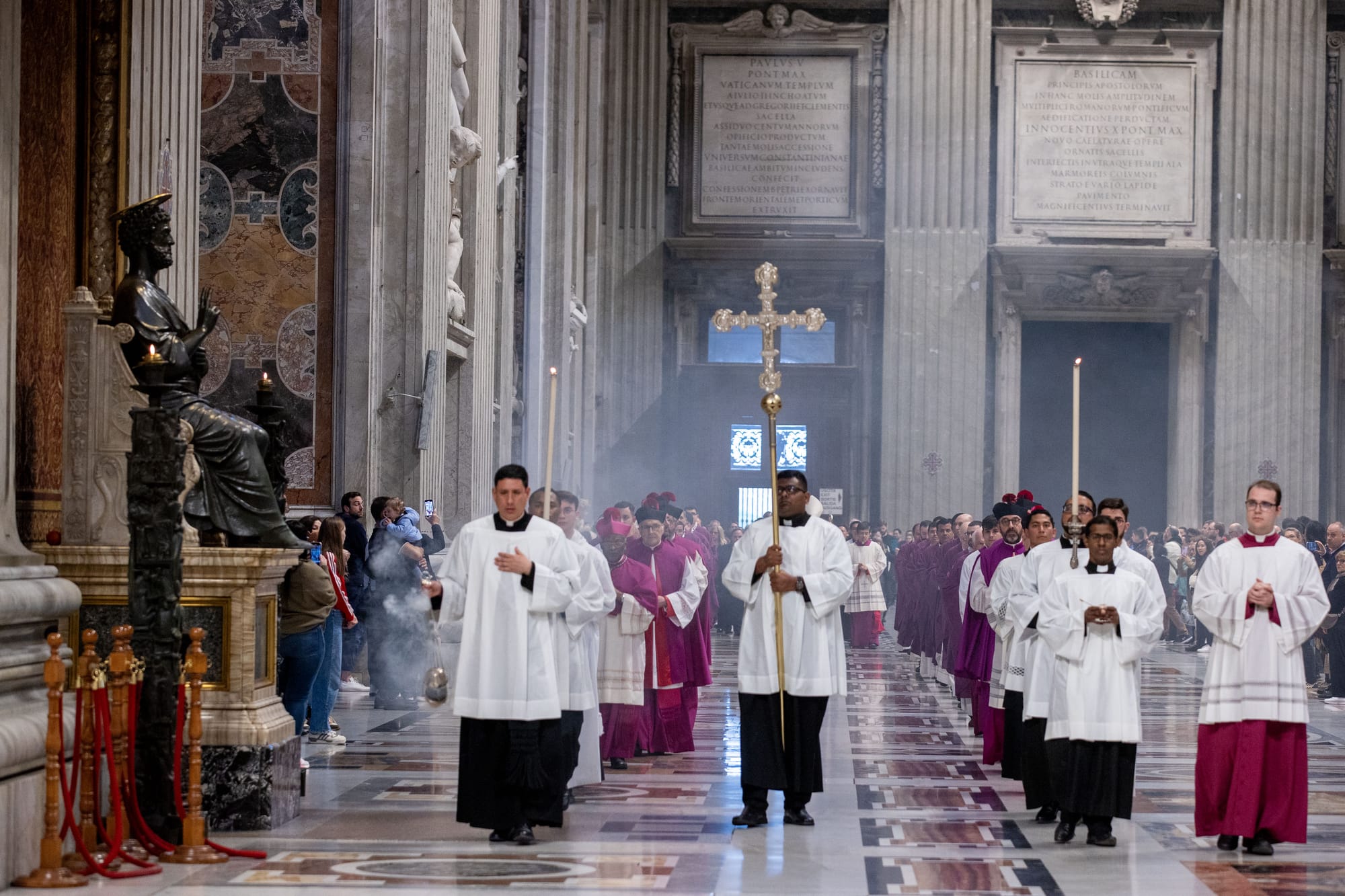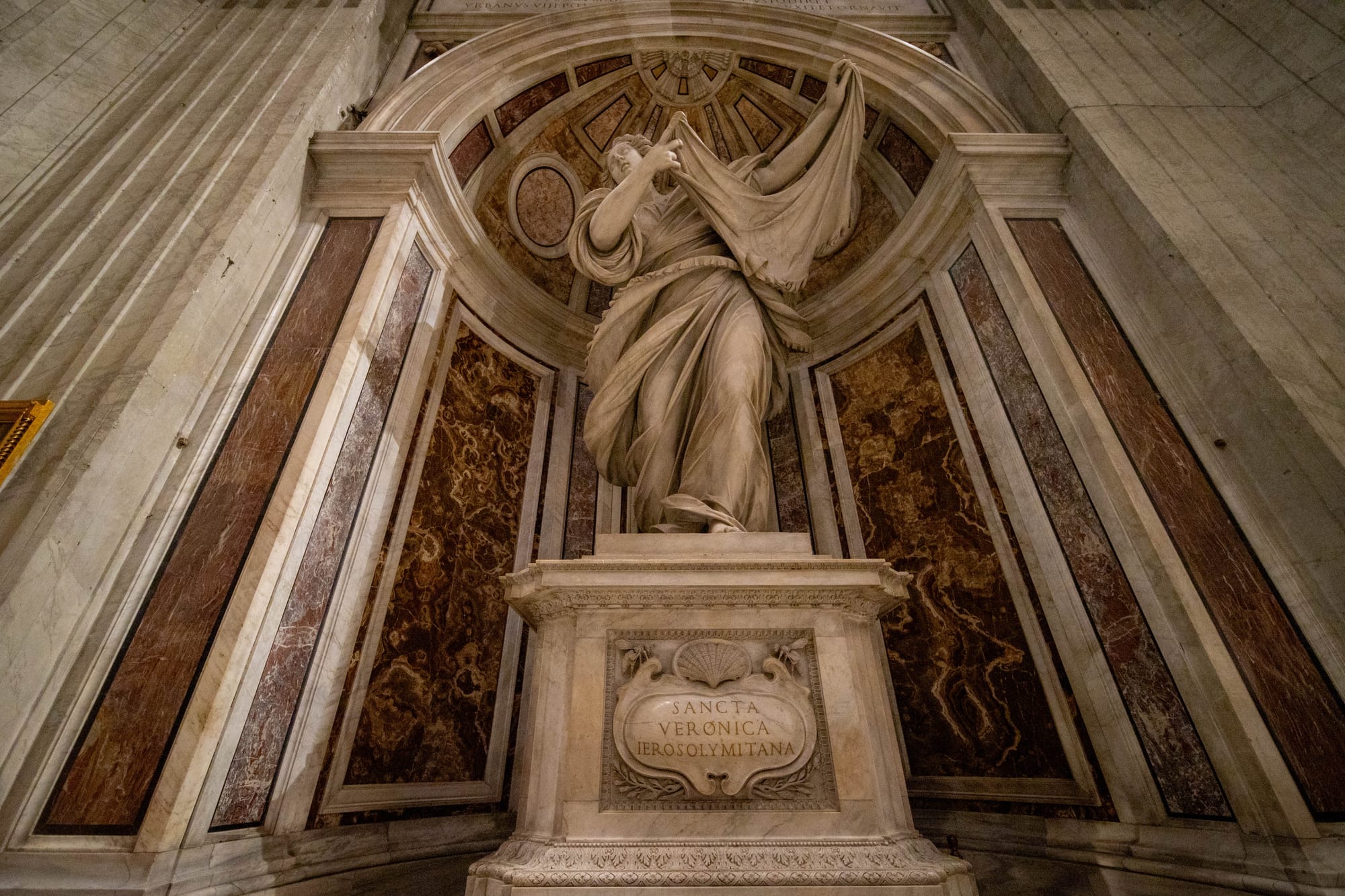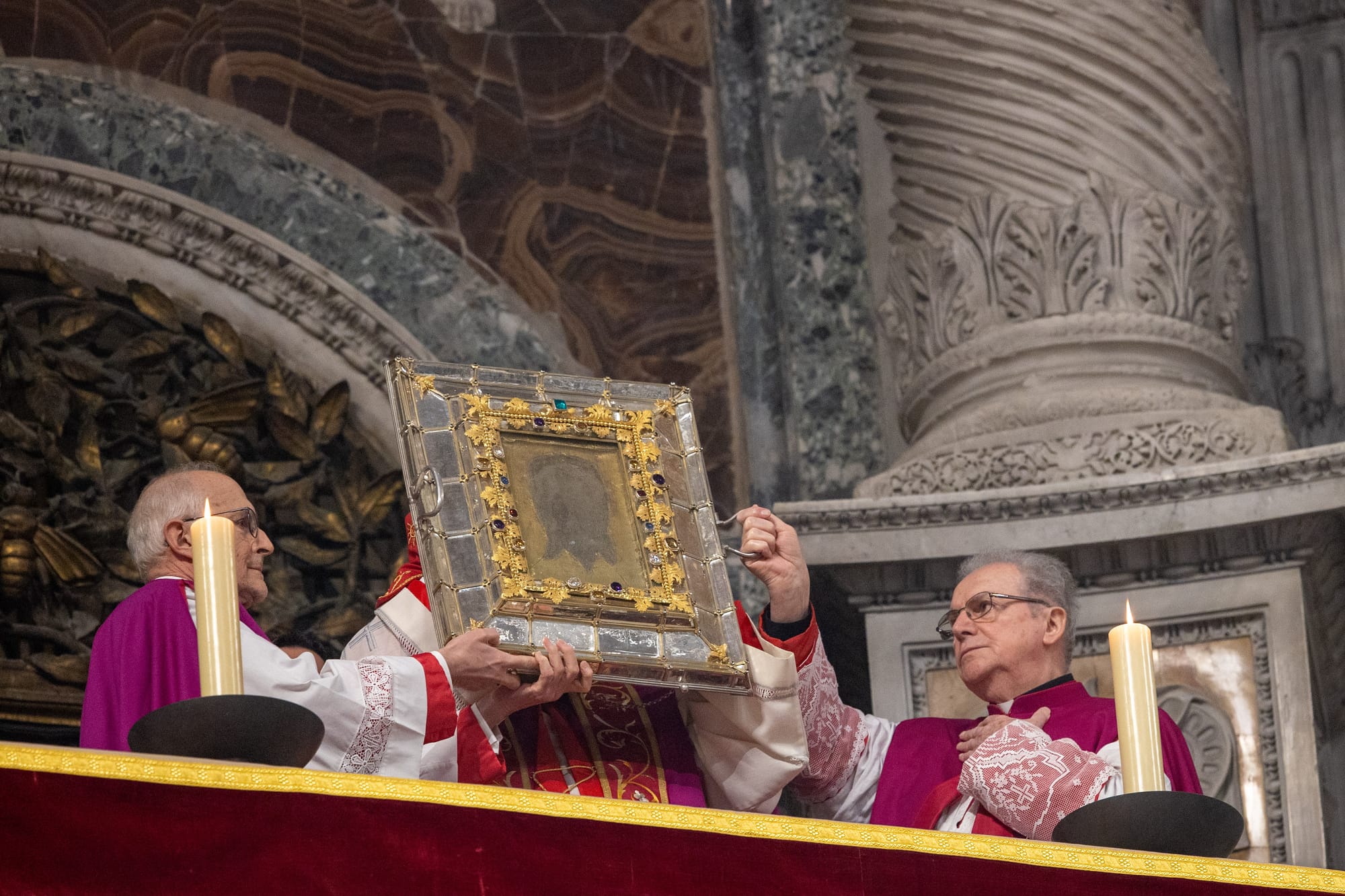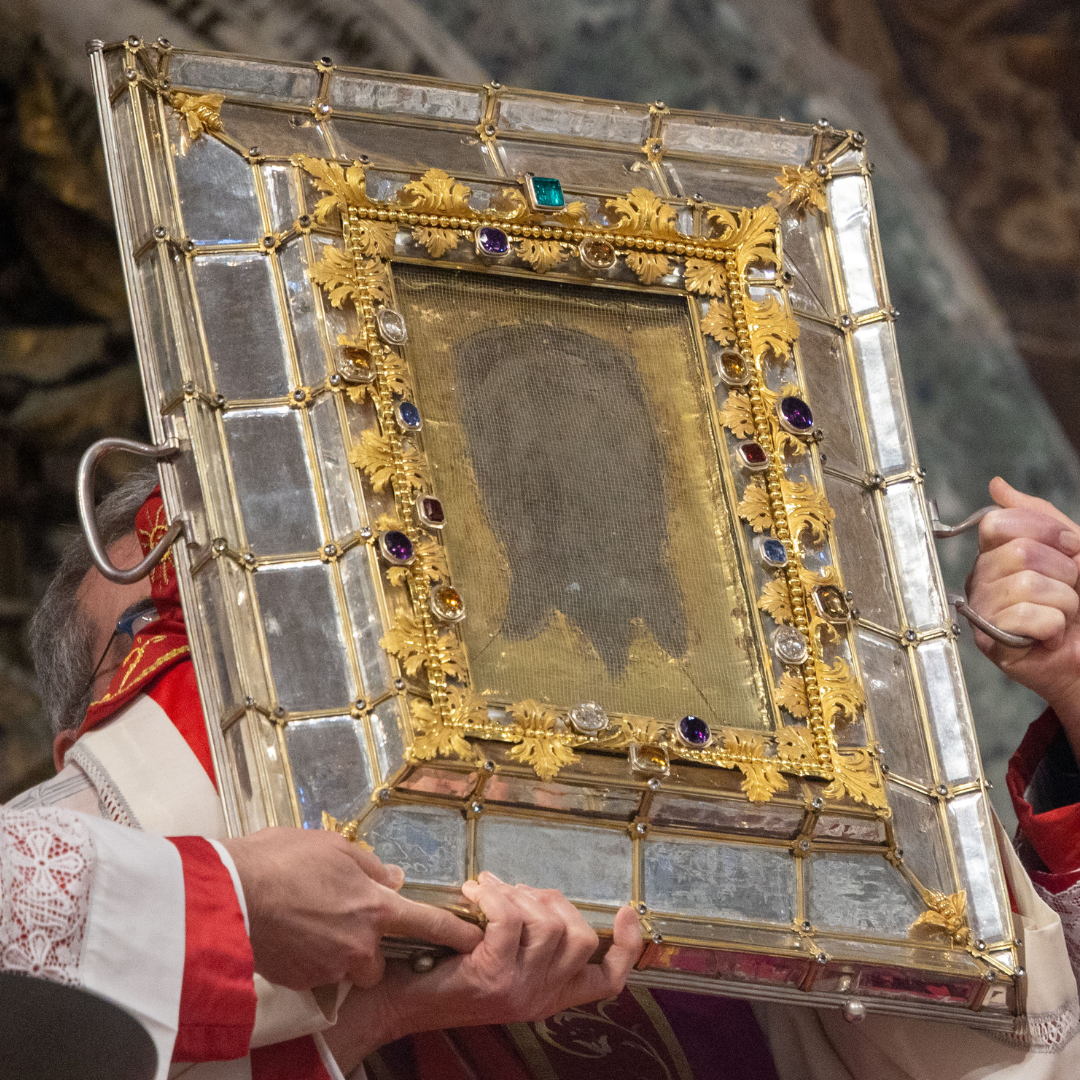In Vatican City, on the Fifth Sunday of Lent, an extraordinary liturgy takes place at St. Peter’s Basilica: the display of a revered relic known as "Veronica’s Veil."
This relic is deeply tied to the Stations of the Cross, depicting a moment where a woman named Veronica wipes Jesus' face with a cloth as he carries the cross to Calvary.
According to tradition, this cloth bears the true image of Christ's face and has been safeguarded by the Vatican Basilica.
The woman who wiped Jesus’ face is commonly referred to as Veronica, derived from the Latin, "vera icona," meaning "true icon." It is believed that Christ's image was imprinted on Veronica's veil during his journey to the cross.
The cloth itself is also named Veronica. Alongside a true relic of the Cross and the relic of the lance of Saint Longinus, Veronica's Veil holds a place of great importance within St. Peter’s Basilica.
Historical Origins of Veronica's Veil
While the exact origins of the relic are uncertain, historical records trace its presence back to at least the 14th century. Even earlier, in the eighth century, there were references to a chapel dedicated to Saint Veronica within the Constantinian St. Peter’s Basilica.
In 1207, Pope Innocent III elevated the importance of Veronica's Veil by publicly displaying it and composing a prayer in its honor. This event marked the beginning of an annual procession, drawing pilgrims far and wide.
The relic inspired Pope Boniface VIII to declare the first Jubilee Year in 1300, during which Veronica's Veil was prominently featured for pilgrims as one of the “marvels of the city of Rome.” Dante was counted among the pilgrims of the Jubilee of 1300, writing about the veil in Canto XXXI of his Paradiso.
The fate of the relic faced uncertainties, particularly during periods of turmoil, such as the Sack of Rome in 1527. However, the cloth endured, and in the 17th century, it was discovered concealed within the new St. Peter’s Basilica.
Passion Sunday Inside St. Peter’s Basilica
On the Fifth Sunday of Lent, the canons of St. Peter’s Basilica gather with the Basilica’s Archpriest, Mons. Mauro Gambetti, and with concelebrating priests and the other ministers. They proceed to the High Altar which marks the tomb of Saint Peter.
The celebrant begins with the opening prayer and incenses the procession cross. The Litany of the Saints is sung by the choir intoning “Saint Peter, pray for us,” three times in honor of the “station” which is kept on this Sunday of Lent.

Each day during Lent, the local Church of Rome pilgrimages to a different tomb of a martyr. This pilgrimage is called the Roman Station Church pilgrim itinerary.
After the third intonation to Saint Peter, the procession begins. The altar servers are followed by the concelebrating priests, the canons, and finally the celebrant. The procession goes down the longest church nave ever constructed.
Those present, the nuns and faithful alike, join the procession, continuing to sing the Litany of the Saints. It culminates in the area of the Altar of the Chair for the Holy Mass. Before 2023, Vespers were sung. Since 2023, the Holy Mass has been celebrated as the Station Church liturgy.
The Unveiling of Veronica’s Veil
After the Mass, a special moment unfolds as the ministers and servers process around the High Altar as the Latin hymn "Vexilla Regis" is sung by the choir, which gives praise to the cross of Christ for our salvation.
Due to the works on the baldachin of St. Peter’s, the procession this year continued around the canopy of the altar and paused in front of the statue of the Apostle Saint Andrew, Saint Peter’s brother.
The clerics take off their head coverings, mitre and birettas, and all face the chapel situated above the statue of Saint Veronica. A prayer is said by the canon who is about to expose the relic of the “Icon said to be Veronica’s Veil.”

He then goes to fetch the icon accompanied by two additional canons. Bells ring as the relic emerges from the chapel and they then show the icon in all directions for the veneration of those present while the thurifer incenses from down below.
The bells sound one more time as the icon is processed back into its chapel. Finally, the ministers of the Mass process to the sacristy of the Basilica. Thus, the station liturgy is done.

“Passion Sunday,” holds significant symbolism, occurring two Sundays before Easter.
Churches traditionally cover sacred images until the Easter Vigil. Saint Peter’s Basilica, however, has a special privilege. When all sacred images are veiled, Romans and pilgrims get to look once more at this icon in Saint Peter’s, gazing once more upon the face of Christ.


